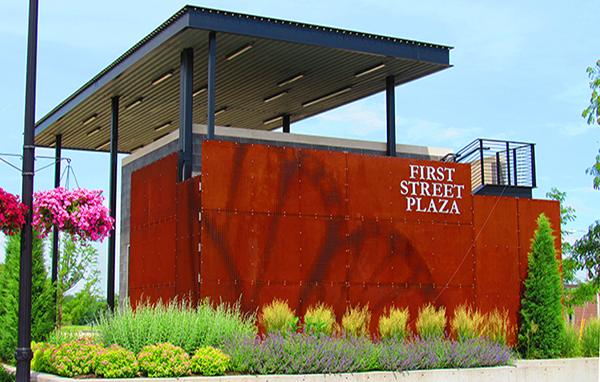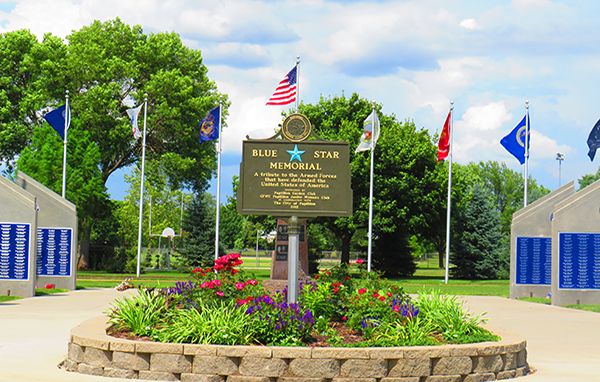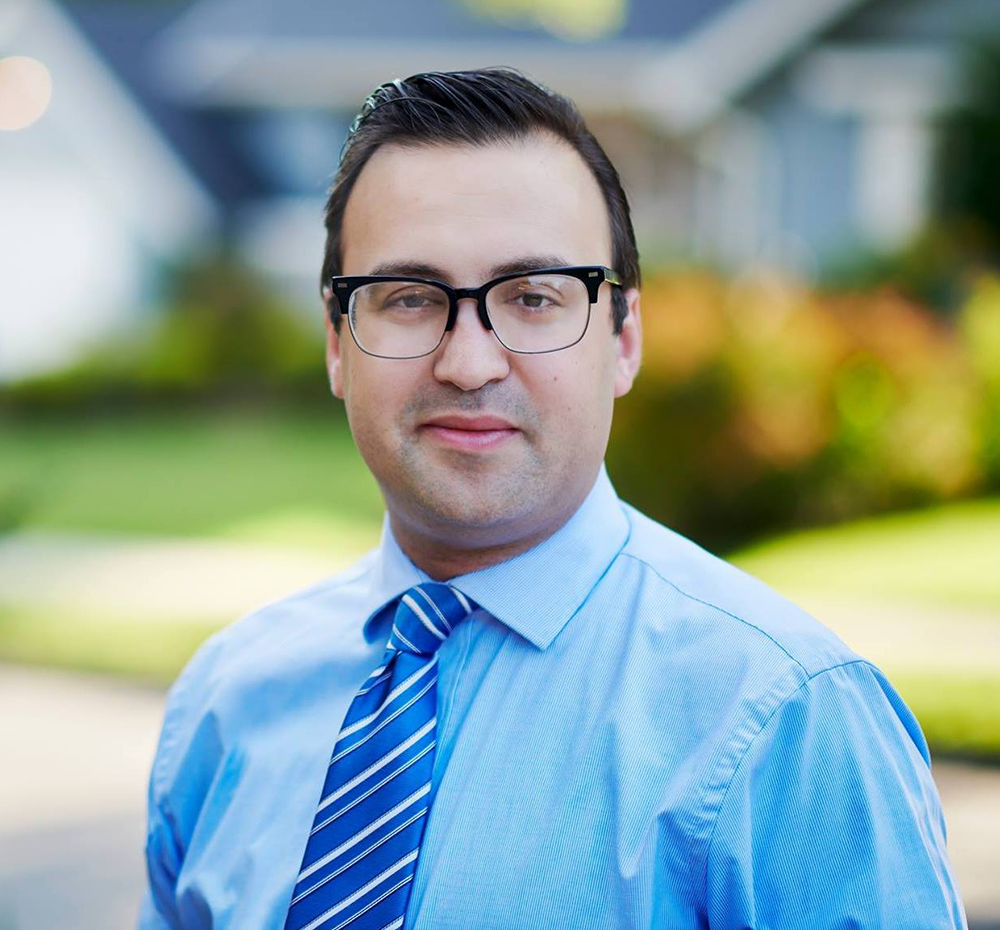PapillionBusinesses.com Interview with Sarpy County Museum’s Executive Director, Ben Justman, Part Two
I’m very curious about economic development and immigrants when they come here. So, what do they do? What do their children do? Where does everyone go? I’ve done some of that for Omaha and that has been very interesting. And then what happens to the community how they survive?
There’s been different waves of immigration. Our immigration records here are predominantly prior to World War One. And so that’s, that’s going to be, but not exclusively, extensively German or Czech. But there’s others from all different parts of Europe, Italy, Hungary, various parts of Germany that became Germany, France, Ireland, England. I mean, really, Norway is another big one. It’s really, it’s all over and there’s a few from Asia that are in those 7000 immigration records, but it is predominantly European. I do know that for many of those people, they were in this country for years before because there were no pressures to move towards citizenship. So, they came in the 1870s. And then 30 years later, they decided, I think I’ll file for citizenship status. It’s been interesting with some of those records to see that process.
As it gets closer to World War I, the funnel tightens and so there’s some challenges from the court system about the authenticity of them becoming citizens. Some petitions are denied. So, that’s been interesting. We helped. I want to say that was right before COVID, or maybe during 2020. One, a gentleman tracked down some of his historic German ancestry through those immigration papers. So, and he was a local, was from Papillion, his family still has ties here. But he lived in Latin America, and worked for a soccer club and was hoping with his wife [would] eventually to move to Europe and part of the EU and work for a soccer organization there. But that would be apparently a lot easier if he was able to connect his new citizenship, connection to the EU.
Other immigration stories that are here that probably can be fleshed out a little bit more are connections with South Omaha. They were given the meatpacking industry…there was, around the last turn of the century, seems to be a good size Latino population that was around here. We know that based on some draft records from World War I where people have put their country of origin as Mexico. They’re not necessarily reflected on those immigration papers that we have in our collection although the immigration papers do show a tremendous amount of information for some of them, even the ships they came in on.
Otherwise, there’s an opportunity to probably research more. It doesn’t come till later, but the African American experience in Sarpy County, the black experience. There were black Exodusters, who came here [as] pioneers. Exodusters [were] people who left the South after the Civil War. Conditions were not great, you know, especially after 1877, after reconstruction. And so, you have a number of African Americans, many former slaves or will be the next generation move to places like Kansas or Nebraska, or Iowa. And so, there are some black families who resided here in the 19th century to document some of their story. And we also have, again from that public history aspect. Over 700 African Americans who worked at the Martin bomber plant during World War II. Many of them probably didn’t live here in Sarpy County, but would have certainly worked here and had a good paying job at the Martin Bomber Plant. It’s an interesting, really, you know, so it’s always interesting, local history.
I like to think that in some ways all history is local. But when it starts to widen, construct drawing larger connections, this is more than just, you know, Aunt Jenny came to tea last Sunday. You see that often, and like the local newspapers, this is when there’s always that wider aspect of drawing conclusions on larger levels. Sometimes that’s regional. Sometimes that’s national and obviously with the Martin Bomber Plant there’s international connections there. I think it happened really just like maybe several 100 yards from where we are sitting right now that 2000 bombers were built during the war, including the ones that dropped the atomic bombs on Japan to help expedite the end of the war. That’s international history right in our own backyard here.
It would be interesting to trace the bombers, different things and see the impact on today with maybe which villages were saved or people.
Yes. It’s the atomic program and ultimately, the planes have dropped the atomic bombs on Japan are world altering and there’s a local connection, right here in Sarpy County.
I didn’t realize these two planes were built here.
Yeah, there were about a little over 500 B29s bombers built here in Sarpy County, including what’s called the silverplate bombers. Tibbets, who was one of the pilots came and selected a handful of bombers to be part of that program. So, one of those is at the Smithsonian in DC and the other is at the National Museum of the United States Air Force at Wright-Patterson Air Force Base in Ohio.
What do you see as economic trends through history through time?
It’s a good question.
Curious about how things move through time. How do you keep a neighborhood alive when there’s a mass exodus of some sort. For example, the children of the immigrants get better jobs and leave the neighborhood. How do you reinvent the neighborhood?
I think that is probably more of an Omaha aspect. I think about, you know, how neighborhoods and Sarpy County have changed and revitalized, you know, South Omaha was heavily Czech; heavily steered towards the meatpacking industry. There’s so many packing [plants] there. Different immigrant populations have come in and taken the reins over the years.
Some of that bled over into Sarpy County. I mean Bellevue at one time prior to World War I was fur trade post and prior to World War II, a very sleepy village. It was. It kind of missed the mark, lost out in history on some of that those early pioneer goals. It went into decline. Other communities grew like Papillion and Gretna and Springfield, and then after World War II and since, Bellevue has grown and continued to grow in some areas, but its history and its future is heavily linked to the base. And so, that I mean Offutt’s Nebraska largest employer. So, that’s that’s, a little different dynamic, I think in a specific neighborhood. I mean, the question could be posed, which is outside of my historical jurisdiction, you know, what is what are some of those neighborhoods in Omaha look like? West Omaha? What is Western Omaha going to look like in 50 years as Omaha continues to go grow West? Because there are certainly people who talk about you know, West Omaha was 132nd at one time and now it’s Elkhorn. Sarpy County’s dynamics are different in the fact that that land between the cities is essentially shrinking. And so, the cities are growing and what used to be you know in pioneer days was 10 mile ride by horse from Bellevue to Papillion was a half a day. 10 miles today is not that much by car. You know, it’s half hour or 20 minutes and you’re here and that land that was you know, 370 with less stoplights, farmland is filling in as the two communities grow. And the same with Papillion and Gretna too.
It will continue to fill it in areas, but the area for the most growth is basically Western Sarpy County that used to be challenging because the infrastructure for urban development couldn’t … It took time. It took effort and took money for that to happen and that is all been accomplished. And so, at this point, that area is poised for some change. And I mean that that will be one more step towards connecting the whole metropolitan area and Lincoln as well plays into part of that. But you know, you can see as a historian some of the trends and see what’s going on in the future. Yeah. It’s also terrifying sometimes. I’d rather not always see it coming. But you can at least get a glimpse of where things are heading.
I think the Omaha metro there was a . . . there used to historically be a stronger divided line for the county line. There’s Omaha above Harrison and out here. For a long time, it was why would an Omahan come to Sarpy County? And that argument I just don’t see any validity anymore. There’s things to do around here, whether it’s the Sarpy County Museum or Fontenelle Forest and Bellevue Little Theater, Storm Chasers… There’s, there are the Valla’s. I mean, the list goes on from a tourism, from an economic development standpoint. And there’s homes that are popping up and with that entire planned neighborhoods.
We try to really just document all the history and with it too, though, not just the past, but also what’s going on today. Or at least in the last 40, 50 years. I think one of our challenges outside of developing a whole new institution is making sure we don’t have gaps in our collection. So, all the development everything I just rattled off, that’s part of our history. It’s new history, but it’s definitely something that’s culturally and historically significant.
And we want to make sure that that part of that story at the very least works its way here and it’s documented so that the fourth graders 50 years from now will know what was going on. Because 200 years is gonna be ancient history to them, but they might be interested in (they often are) what happened during their grandparents’ lifetime. And that could be going on right now. So, some of our aspects, now for example, hard to do more to collect history from the 60s, 70s, 80s. Don’t mean to single out people of a certain age, but the boomer generation … we’re at a at a time where we need to start thinking about how do we document their history. How do we tell their story, whether it’s the Vietnam experience, or what it’s like going into high school in Bellevue, Papillion, Gretna in the 60s? What is it like to help out on the family farm, not in the 1870s, but in the 1970s.
So, those are the sorts of things we need to start thinking about as an organization and have tried to make sure that history is included here as well so that we don’t have those gaps. History doesn’t end in World War II. It’s continuing and we want to make sure that next chapter has a space here.
I think a lot of people don’t think that way. What history is they haven’t pushed so far into the time period of living people but if you don’t preserve now, you’re not going to have it later. It becomes too little, too late. You’re scrambling to get just a fragment of what was there. I mean, we all know, we all think gee, what if I could have only asked my grandparents these handful of questions. Well, why not just stay ahead of the curve and try to do what we can now before it’s too late, before we’re at crisis point?
That’s good advice.
Other parts in this series:
Sarpy County Museum Interview: Ben Justman, Executive Director of the Sarpy County Museum, Part One
https://papillionbusinesses.com/blog/sarpy-county-museum-interview-executive-director-ben-justman-part-one
Sarpy County Museum Interview: Ben Justman, Executive Director of the Sarpy County Museum, Part Three
https://papillionbusinesses.com/blog/sarpy-county-museum-interview-executive-director-ben-justman-part-three/




